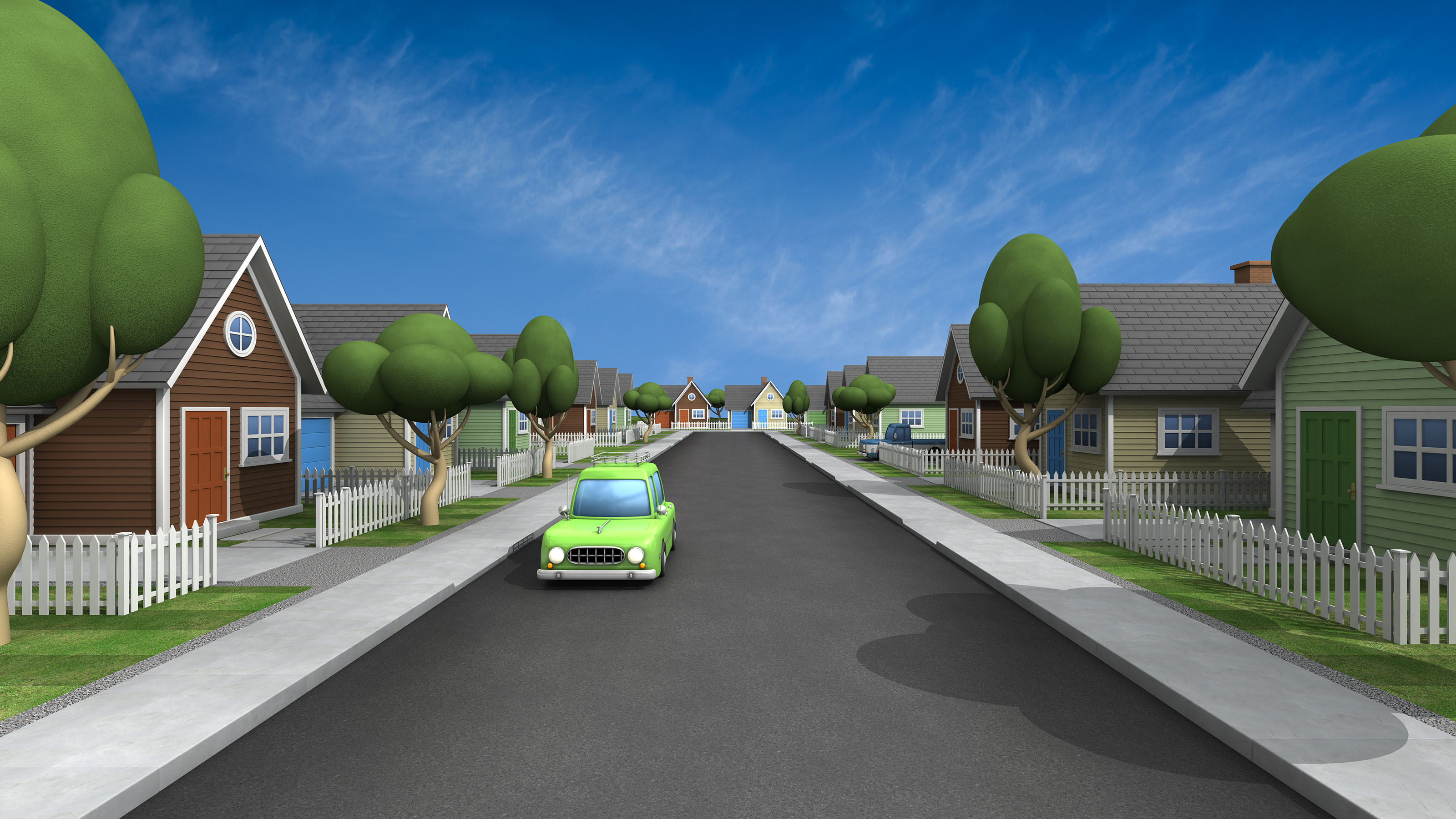What Does It Cost to Be Middle-Class?
Is being middle-class worth it? You be the judge, but here’s what the numbers say about how close some in the middle class are to the poverty line.


Some people think of the "middle-class," and picture a big house with a white picket fence and a healthy bank account. But that’s not always what having a middle-class income in the United States looks like.
Often, being in the middle class means acquiring a lot of debt, struggling to pay the mortgage, and living paycheck to paycheck. If that sounds like you, you are not alone. Here's why you might feel like you live in poverty even though you're considered to be middle-class in America.
Middle-class income
- Being in the middle class is something that many people and families have aspired to do over the years. In recent years, about half of people in the U.S. have been considered "middle-class."
- Some people with middle-class incomes feel as though they are living in poverty, and the numbers corroborate those feelings.
Data show that many "middle-class" families can't make ends meet or afford necessities in some cases. When you account for all the costs it takes to achieve middle-class status, you might not fare much better than those with incomes below the poverty line.
From just $107.88 $24.99 for Kiplinger Personal Finance
Be a smarter, better informed investor.

Sign up for Kiplinger’s Free Newsletters
Profit and prosper with the best of expert advice on investing, taxes, retirement, personal finance and more - straight to your e-mail.
Profit and prosper with the best of expert advice - straight to your e-mail.
The federal poverty level for a family of four is $30,000. According to U.S. Census Bureau data, the median (middle-class) household income was $74,580 last year (most recent statistics).
With a difference in income of nearly $45,000, you might expect middle-class families to have a much easier time affording necessities. Unfortunately, due to high living costs, many families who are considered to be middle-class feel like they are essentially living in poverty.
Overall, It costs more than $38,000 annually to be middle-class, landing some families with household incomes of $74,580 just $6,556.54 over the federal poverty line (more on that below). When considering tax withholdings, tax credits, and lack of eligibility for certain government benefits, middle-class families might pocket only about $6,291.08 more each year than families making just $30,000 a year in income.
Why is the middle-class struggling?
Out-of-pocket expenses for middle-class families are usually much greater than expenses for families with incomes below the poverty line. For one thing, families with higher incomes tend to pay more in income taxes. That's because your income tax rate is tied to your income tax bracket.
So, even though income tax brackets are adjusted for inflation, the higher your income bracket, the more income tax you'll generally pay. And, middle-class families may miss out on income-based tax credits that could lower their taxable income, such as the earned income tax credit (EITC).
- Tax withholdings can add up to over $1,000 per month for an individual making $74,580 while people making $30,000 could easily pay less than $400 per month in income taxes.
- Families with household incomes of $74,580 might not qualify for the refundable EITC which can exceed $6,000 per year for families with lower incomes.
To achieve a middle-class "status" in the first place, some people obtain college degrees, and paying off student loan debt can burden budgets for decades. These payments can be significant given that the average borrower accumulates nearly $40,000 in college debt, according to the Education Data Initiative.
- The average monthly student loan payment is $460.
- Graduates typically take 20 years to pay off their loans.
- Over 20 years, an "average student loan" accrues $26,000 in interest, according to the Education Data Initiative. (That's assuming an average 6% interest rate and an average federal student loan debt of a little over $37,000 per borrower.)
Low-income assistance programs
Additionally, families with incomes below the poverty line may qualify for several government-funded assistance programs that middle-class families typically are not eligible for. Those programs can supplement costs for healthcare, groceries, and home energy use.
- For example, last year, families without subsidized health insurance paid an average of $6,568 toward family health insurance premiums and deductibles.
- Middle-class families don’t qualify for SNAP(government benefits that can help eligible people pay for groceries), which are estimated to average more than $ 713 per month for a family of four this year.
- Home heating costs are estimated to average 1,123.85 for winter 2023-2024. Families with lower incomes might receive government funds to help supplement their energy costs, while families with higher middle-class incomes might not.
[Data used to calculate dollar amounts was collected from several sources, including the U.S. Census Bureau, the Education Data Initiative, and LIHEAP. Data is based on median and average amounts. Individual circumstances may differ. See below for a complete explanation of how data was collected and calculated.]
Middle-class in America
When you consider all these factors, there’s not a huge difference between “middle-class income” and “poverty-line” income. Here’s why you might pay $38,023.46 a year to be middle-class in 2024.
Average Annual Expenses and Credits
| Row 0 - Cell 0 | Middle-Class Families | Families Living in Poverty | Difference |
| Starting Salary | $74,580 | $30,000 | +44,580 |
| Federal Tax Withholdings | $8,248.56 | $1,616.04 | -$6,632.52 |
| Medicare Tax Withholdings | $1,081.44 | $435 | -$646.44 |
| Social Security Tax Withholdings | $4,623.96 | $1,860 | -$2,763.96 |
| EIC (Tax credit) | $0 | +$6,604 (2 qualifying children) | -$6,604 |
| Healthcare | $6,575 | $0 | -$6,575 |
| Groceries | $10,396.50 | $1,840.50 | -$8,556 |
| Home heating | $1,578 | $587 | -$991 |
| Student loans | $5,520 | $0 | -$5,520 |
| Total Expenses | $38,023.46 | $-265.46 | $38,288.92 |
| Remaining Salary | $36,556.54 | $30,265.46 | +$6,291.08 |
Middle-class disadvantages
- The data used to determine what it costs to be middle-class does not include childcare costs.
- Some middle-class families may qualify for child care subsidies (government assistance for child care) in states like New York and California where the income guidelines aren’t as strict.
- However, families making more than $70,000 per year will not qualify for childcare financial assistance in most states.
So, the cost to be middle-class could be significantly higher than $38,023.46 for many families with young children. Additional childcare costs depend on where you live, the ages of your children, the number of children, and the type of childcare you choose.
Some families may be able to claim the federal child and dependent care credit, which could reduce their total tax liability.
Middle-class advantages
Although being middle-class can be challenging financially, all is not lost. The $6,291.08 more that middle-class families pocket can make a big difference. For example, middle-class families can save more money for retirement by contributing to a 401(k) or IRA (which can also reduce tax liability).
An additional $6,000 or more per year can also improve daily living. For example, that extra money might mean a middle-class family can afford a rent or mortgage payment $500 higher than a family living in poverty could. Higher income levels associated with the middle class can also make it easier for families to get approved for mortgage loans and car loans. Some landlords might not even rent to families with lower incomes for fear they can't afford to make timely rent payments.
Families with middle-class income can also benefit from making some of the following money-saving financial choices that families living in poverty might not be able to.
- Reduce tax liability by contributing to tax-free health savings accounts, such as an HSA or FSA.
- Make larger payments that can result in big discounts (for example, paying 6-month car insurance premiums, buying groceries in bulk, and making more than minimum credit card payments, which can reduce overall interest costs).
- Purchase newer vehicles that require less frequent repairs.
- Pay more bills on time, which can prevent late fees, reconnection fees, and negative impacts on credit scores.
Average earnings and expenses
- The middle-class income of $74,580 is based on the median U.S. income is provided by the U.S. Census Bureau. However, middle-class families may have incomes higher or lower than that.
- Expenses for families living in poverty are based on a salary of $30,000, which is the federal poverty level for a family of four.
- Families living in poverty may have incomes below $30,000, and the poverty level is higher for households with more than four family members.
How expenses were calculated: Tax withholdings do not include state income taxes or local income taxes and do not account for any dependents. Tax withholding figures were calculated using a tax withholding calculator. Actual tax withholdings may differ from person to person. Self-employed workers may need to pay self-employment tax in addition to regular income tax withholdings.
Student loan data is based on a report from the Education Data Initiative and represents averages. The average student loan payment recorded is the average for only one adult in the household. Individual student loan debt and repayment periods may differ. Additionally, families living under the federal poverty line may also have student loan debt and make monthly payments.
Health insurance costs for middle-class families are based on data from Health Affairs. Health insurance costs for families with incomes of $30,000 are based on 100% subsidized health insurance. However, families living in poverty may have some out-of-pocket health care expenses.
Average SNAP benefits are based on data from the U.S. Department of Agriculture and is based on a four-person household. This monthly average was multiplied by 12 to determine the average annual benefit.
Total average grocery costs were calculated by averaging the average grocery spending by high and low-income households as reported by the U.S. Department of Agriculture. Average SNAP benefits were subtracted from the average grocery spending to determine the grocery expense for families living in poverty.
The average home heating cost is based on projections from the Energy Information Administration (EIA). To determine the average heating cost for families living in poverty, state average energy benefits were calculated first.
The average energy benefit for each state was represented by averaging the minimum and maximum heating benefit for fiscal year 2023 as reported by LIHEAP. The average of each state was then used to calculate the national average.
Amounts were rounded to the nearest dollar. The national average for heating benefits was then subtracted from the average heating costs.
Related
Profit and prosper with the best of Kiplinger's advice on investing, taxes, retirement, personal finance and much more. Delivered daily. Enter your email in the box and click Sign Me Up.

Katelyn has more than 6 years of experience working in tax and finance. While she specialized in tax content while working at Kiplinger from 2023 to 2024, Katelyn has also written for digital publications on topics including insurance, retirement, and financial planning and had financial advice commissioned by national print publications. She believes knowledge is the key to success and enjoys providing content that educates and informs.
-
 Should You Buy Gold as It Tops $4,000? Here's What the Experts Say
Should You Buy Gold as It Tops $4,000? Here's What the Experts SayRate cuts, a weak dollar and macro uncertainty have helped create a "perfect storm" for gold this year. Should investors add exposure or is it too late to buy?
-
 Another IRS 1099-K Threshold Change to Know for Your 2025 Taxes
Another IRS 1099-K Threshold Change to Know for Your 2025 TaxesTax Law After years of uncertainty and changing requirements, the 1099-K reporting rules for 2025 are now set, and the thresholds have changed since last year.